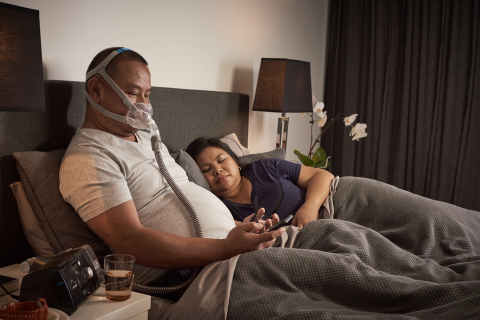When starting on CPAP therapy some patients will pick it up easy from the first night, others will find it more challenging and take some time to adapt.
Our approach when setting up new patients is to keep it as simple as possible early and let the patient try to get a full night with the therapy from night one. This will often end in two ways… Night 1 goes really well and people take to it easily or Night 1 is a disaster and we need to troubleshoot.
We see using CPAP akin to learning a new skill and I often tell people about my learning to swim in adulthood. When I first went to the pool I could swim ¼ of a lap then stop. Next time half a lap. Next time a full lap. The next time 2… But then once I could swim 2 laps my next leap was to 10 laps and now I can swim 3 KM.
CPAP I see similar patterns with people who struggle. We may aim for 15 minutes, then half an hour, then an hour, then 2… Then we hit a magical point where the therapy is tolerated for a full night.

When I was beginning to swim, the pool used to cause me stress because I didn’t really know what I was doing and I was bad at swimming. But, I learnt pretty quickly that you can’t get better at swimming if you don’t jump in the pool.
CPAP is similar. The early stages are frustrating for people, but once you give it a try and practice using it, it becomes easier – like most skills. A common question asked at the start of trials is “Do I need to use this forever?” As people get used to the therapy and start to notice differences I see this question change to “Can I take this with me when I go on holidays?”
For me now swimming is useful as I can exercise without the impact stress of running.
For people who have developed the CPAP skill, they’re generally sleeping more efficiently to allow a better quality of life to ensue.
My tips for people starting on CPAP therapy:
1. Give it a go the first night and see if you pick it up straight away. If you do, easy. If not, use your technician to help you through the first month. The majority of our training is based around that first month of use and troubleshooting to make using CPAP comfortable and easy. For more information on how your CPAP technician can help you, Click here.
2. Choose a mask that you think will be most comfortable for you and keep the decision making simple. If the decision is left to me, I generally go for a P10 or small nasal mask based on their being less on the head. From here, if this isn’t comfortable, I troubleshoot. Most clinics should offer a trial or money back guarantee on your mask.
3. Give yourself time. CPAP is generally a long term therapy. As discussed in this blog, using CPAP is a skill and skills can take time to develop.
4. Understand why you are using it and what benefits you may obtain from using it. This discussion is generally best had with a Doctor/Physician. Some people will notice life changing benefits while other people will only notice small differences. Having reasonable expectations around what you can achieve with therapy goes a long way in ensuring it is a success.



